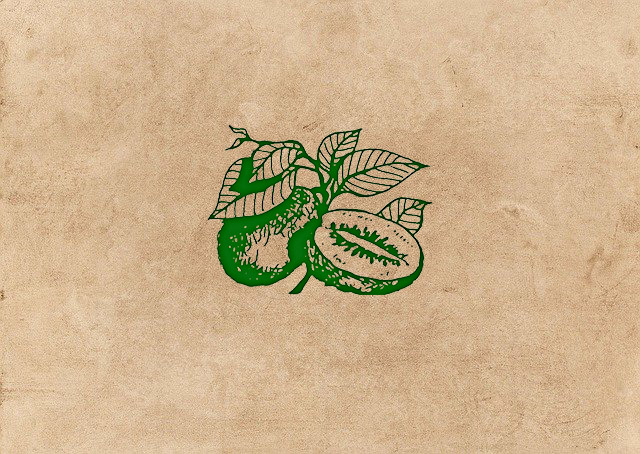Home Orchard Fruit Trees
The Home Orchard - Selecting suitable species
The amount of fruits that can be grown throughout Australia is truly amazing. Not only for fresh eating but for drying, preserving and juicing. There are also a number of fruit trees that make effective windbreaks, are of ornamental value and possess nitrogen fixing abilities.
With so many fruits to choose from it's no wonder that some people become confused when starting out. Some sound advice is to talk to people who have already done it within your locality, and talk to as many people as you can. We all have our own ideas of doing things and as you discuss home orcharding with others you will see and hear of the best ways to suit you. Local organisations are a good place to start, permaculture and organic growing groups, rare fruit societies, state department of agriculture or your local nursery. Planting your orchard is a fairly permanent decision so it is wise to base your choices on as much information as possible.
With the correct information you can make your land very pleasant, healthy and productive. A $10 to $20 tree can save you up to 20 times that amount in one year, and the fruit you are rewarded with will taste far better and be better for you than anything off the supermarket shelf. Of course, there is also the added pleasure and satisfaction of having grown and harvested your own.
When planning your orchard, clarify what you hope to achieve. Would you like to grow enough fruit and nuts to keep your family supplied all year, grow enough citrus for breakfast juices or grow some of those unusual favourites that are not readily available commercially.
Soil types
The performance of your fruit trees will be greatly influenced by your soil type. The survival of some fruit trees such as pawpaws and avocadoes are dependent on soil type whilst the flowering and fruiting of other fruit bearing trees can be strongly influenced by it. Fortunately there are a lot of fruit trees that are quite tolerant of different soil types.
Good soil drainage is of paramount importance when planting out fruit trees. A good practice is to fill the newly prepared planting hole with water and watch it drain away. If it takes longer than half an hour to soak away into an already moist soil, you can expect any plant to be drowned during wet weather. In this case you will need to plant into soil mounded above the current soil surface. It is recommended for some trees such as citrus that they always be mounded.
Also keep in mind that the 40 - 50cm surrounding the planting hole needs to weed-free. Young trees find it difficult to compete against weeds and grass. Mulching is an effective weed barrier. It will help to retain soil moisture and add humus and nutrients to soil as it is breaking down. When applying mulch take care not to apply it against the base of the tree.
Choosing the correct fruit trees for your climate
Climate will determine the type of trees you can grow in your locality. Winter cold (chill factor), summer warmth (humidity and temperature) and the length of the frost-free season are three major climatic factors that will determine the suitability of trees. Wind, rainfall and aspect are other important factors, however these can often be modified to suit.
Wind
Most fruit trees are vulnerable to strong winds. If possible plant a windbreak 12 months or so before putting in the orchard. Fruit trees such as Ice-cream beans, seedling Avocadoes or seedling Macadamias as well as some of our fruit bearing natives all provide fast growing, productive and well formed breaks.
Aspect
The ideal site for your home orchard will have a slight slope that aids in drainage. Flat areas need to have good soil structure, while steep slopes can be prone to erosion. In most parts of Australia a north-facing slope is best, the idea being to catch as much sunlight as possible. Growing smaller shrubs on the north and east with taller trees on the south and west will allow for the maximum use of winter sun and wind protection.
Evergreens and deciduous
When making out your list of fruit trees divide them into two groups, evergreen and deciduous. Evergreen trees hold their foliage and sometimes fruit over the winter period. Deciduous trees require a dormant period where they defoliate and literally go to sleep during the winter. Deciduous trees planted on the north east side of the orchard will still allow ample light to the evergreens during winter.
When planting deciduous trees in a moderate climate it is important to ensure that the trees' chill requirements are met. There are several excellent varieties of stone and pome fruits that require as little as 150 hours of chill. That is 150 hours of temperatures below 70C.
Evergreen trees Deciduous trees
Kei apple, guavas, citrus, avocadoes, sapotes, Stone fruit, pome fruits, nuts, grapes, figs, persimmons
Evergreen shrubs Semi-deciduous
Jaboticaba, grumichama, acerola cherries Mulberries
Evergreen vines Deciduous vines
Passionfruit Grapes, kiwifruit
Extending the harvesting period
The harvesting period of fruits such as citrus, avocadoes, mangoes and stone fruit can be extended quite significantly by planting a wide selection of varieties.
Oranges are one example where by planting early, mid and late varieties it is quite possible to extend the harvesting period up to 10 months of the year.
Example of Orange varieties
Variety Maturity
Newhall Navel April - May
Hamlin Navel June - July
Seedless Valencia August - October
When making out your orchard plan, sit down with a specialist fruit tree catalogue, good book and calendar. Make a note of when your favourite fruits mature and then list varieties to extend the harvesting period.
Below are just some of the fruits available for each month of the year. The harvesting times of many can be extended through selecting early, mid and late varieties.
Month Fruit trees
January Mangoes, lychees
February Grumichama
March Macadamias
April Santol, feijoa
May Persimmons, pecan
June Cherimoya,jakfruit
July Kiwifruit, citrus
August Avocado, loquats
September Carambola
October Tropical peaches
November Sapodilla, loquats
December Figs, white sapote
(estimated maturity times based on subtropical climate)
Grafted Fruit Trees vs Seedling Fruit Trees
Grafted Fruit Trees
For short-term results it is definitely advisable to plant grafted fruit trees. For fruit growing 'beginners', grafted plants are certainly good insurance. You are sure of getting a good quality fruit and regular crops within the minimum amount of time. As a general rule grafted trees bear in half the time of a seedling, however this is variable. When choosing a grafted specimen you have the benefit of a vigorous and disease resistant rootstock and the performance, quality and uniformity of the scion (top growth) from an excellent parent plant. The search for quality rootstocks is ongoing, with desirable characteristics being those of bacterial and fungal disease resistance, pest resistance and dwarfing characteristics. Passionfruit that are grafted onto flavicarpa rootstock show fusarium wilt tolerance, citrus grafted onto Trifoliata rootstock are more Phytophthora resistant and Custard apples onto Cherimoya rootstock shower a higher resistance to bacterial wilt.
Seedlings
No two seedlings are the same and it is this diversity, a natural occurrence, where lies the opportunity to improve selection, whether it is for quality of flowers or foliage, disease resistance, growth characteristics or quality of fruit. This can be done in two ways; you can select good quality fruits from a heavy bearing seedling tree, plant the seeds and wait for the results. This is time consuming and depending on the 'true to typeness' of the seed you may be disappointed.
Seedling trees tend to be more vigorous, longer living, have better wind resistance and are often more disease resistant due to their genetic diversity. Seedling trees are also adaptable. It is this adaptability and hardiness that makes seedlings a preferred choice when planting out in less than ideal conditions. A sub-tropical fruit tree seedling has a greater chance of tolerating marginal cold areas than a grafted type.
Budding
Lateral buds that are removed for vegetative propagation perpetuate their juvenile/maturity phase and the shift from juvenile to mature continues in subsequent growth. Buds taken from mature wood produce plants that are biological mature, therefore producing a plant that will come into production earlier.
Cuttings
This method of propagation has many benefits. It is a fast and relatively simple technique that avoids the problem of graft incompatibility and poor graft unions.
A cutting is the portion of a parent plant that is selected and induced to form roots. The new plant is a clone, identical to its parent. A cutting grown plant will always have a fibrous root system in contrast to a tap root that most fruit trees grown from seed have. The tap root is the natural anchorage system for a plant, therefore cutting grown plants require some protection from strong winds while becoming established.
Air-layering (Marcotting)
One of the most commonly air-layered trees is the lychee. An air-layer is made by ringbarking a mature limb and covering that area with an open waterproof bag of moist peat moss. When rooting occurs the new tree is cut from the parent plant which results in a biologically mature tree identical to its parent.
Pollination
Some of the fruits that may require cross-pollination for better results are Avocadoes, Pecans, Pears and apples.
In some fruit trees pollination will not be successful unless pollen comes from a tree of the same species but of a different variety. In other species such as Carob, Pawpaws, Kiwifruit and Kei apples, male and female plants are needed.
In both cases the male or pollinating variety is planted at a ratio of approximately 1 pollinator to 7 - 9 of the main species.
Buying fruit trees
Fruit trees can be ordered from your local retail nursery or through a specialist fruit tree supplier who sells directly to the home orchardist. When purchasing trees look for quality first, size secondly and then price. A $30 tree of excellent quality will be a much sounder investment than a $15 tree of poor quality. A young tree that is root bound or has suffered stress conditions may sit in the soil for up to 12 months before flourishing.
Home orcharding is fun and very rewarding but remember it is always better to manage a small orchard well than to find yourself overburdened with a large one.













